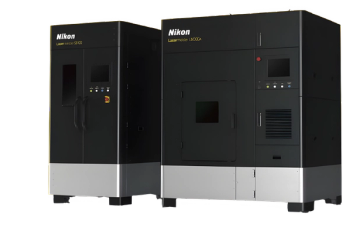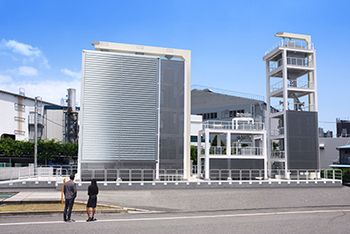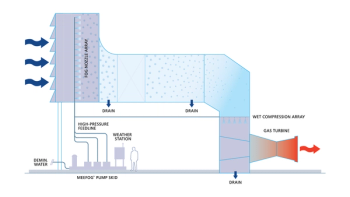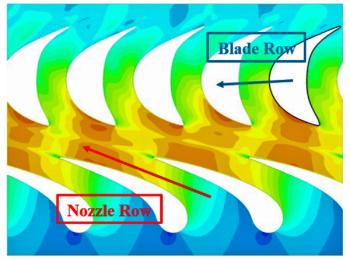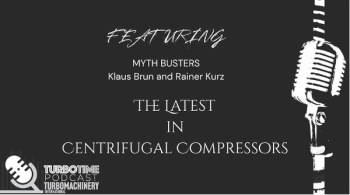
- May/June 2025
- Volume 66
- Issue 3
Myth: We Need That Last Percent
The perfection trap is just that: a trap—and often a costly, inefficient trap that leads to delays and even diminished operational flexibility.
There is a persistent myth in engineering, research, and development: The pursuit of perfection is always necessary. This mindset drives organizations to chase the last fraction of a percent in efficiency or performance. In the turbomachinery industry, this is sometimes called the “Perfection Trap,” which describes how overzealous engineering or regulations can waste time and money with limited benefits in actual efficiency, emissions reduction, power, or other desired machinery performance characteristics. Unfortunately, a relentless push for perfection often leads to project delays, budget overruns, and even diminished operational flexibility.
When managing an R&D budget—whether within a company or when funding third-party research—it is crucial to prioritize investments based on the greatest need and highest impact. Resources are always limited, and not every promising technology can or should be funded. Historically, many R&D initiatives have failed to produce results, which is an accepted risk in innovation. However, there is another category of wasteful spending: research that pushes for extreme, unnecessary performance improvements far beyond what is technically or commercially reasonable. Engineers and researchers are naturally inclined to push boundaries, squeezing out the last bits of efficiency or performance, even when the cost-benefit ratio no longer makes sense.
A prime example of this was the race in the 1990s and early 2000s to drive NOx emissions from gas turbines into the low single-digit parts per million (ppm) range. The effort toward lower NOx emissions required massive investments over decades (often provided through taxpayer funding) or complicated add-on post-combustion treatment systems. However, the real-world benefits were negligible. Hundreds of millions of R&D dollars were spent on minimal improvements based on a questionable environmental hypothesis. Besides, the available test methods had a larger uncertainty than the required emissions levels. In hindsight, NOx levels of 25 - 40 ppm were perfectly adequate, yet the industry sacrificed operating range, reliability, and overall system operability in the name of achieving an arbitrary perfectionist goal. Ironically, we are reversing course today, often accepting slightly higher NOx levels to reduce CO and CO2 emissions, acknowledging that the previous obsession with perfection was misguided.
This pattern is not unique to NOx reduction; the same excessive drive for perfection can be seen across multiple areas of turbomachinery engineering. There are many other examples of the cost of chasing perfection, as demonstrated by over-engineering across our industry.
FUGITIVE EMISSIONS
For example, fugitive emissions reduction regulations for centrifugal compressors are driving irrational engineering decisions. Some current regulations for methane leakage criteria are set so low that the measurements become arbitrary, and it becomes nearly impossible to verify the levels required by law. Modern rotating machinery dry gas seals have reduced methane fugitive emissions to the point that they do not significantly contribute to global greenhouse gas emissions. They are certainly far lower than many other methane emission sources in the fossil energy industry, such as reciprocating compressor piston leakage, coal bed methane seepage, pipeline process valve leakage, cold stack venting, and, in particular, emergency or maintenance blowdowns. Yet, there is a push to further reduce methane leakage from centrifugal compressors, leaving few technically viable options to meet permitting requirements for compression stations or require additional equipment such as vent gas re-compressors that increase cost and reduce reliability.
Hermetically sealed compressors are being touted as the solution. However, they are inherently less efficient than conventional machines and, when including all the electrical components required, more costly to purchase and operate than gas turbines or conventional electric motor-driven compressors. They simply add complexity and cost without addressing larger, more impactful sources of emissions. And because they are less efficient, their total (all-in) carbon emissions footprint is usually worse than conventional compressors with dry gas seals.
PARTICULATE EMISSIONS
Similar trends that exaggerate criteria pollutant regulations can be found for particulate matter exhaust emissions from gas turbine plants. In some strict urban regulatory environments, the plant air emissions permit requires the gas turbine’s exhaust air to have a lower particulate matter count than the actual city’s air quality on most normal days—i.e., the gas turbine is expected to act like an air filter, with the exhaust air having to be cleaner than the air that enters the machine. Although natural gas-fired plants are a type of fossil-fueled plant, they generally do not produce particulate emissions and should not even be regulated for this criteria pollutant. Subjecting natural gas-fired plants to this regulation makes operation more costly and may even negatively impact total plant efficiency due to added inlet pressure losses. This is clearly another extreme regulatory example that is difficult to justify in terms of real environmental and health impact.
DRIVERS AND DRIVEN EQUIPMENT
Even the push for efficiency improvements for turbomachinery drivers and driven equipment is sometimes questionable. Clearly, we always want our machines to be more efficient to lower carbon emissions and reduce energy consumption. All major turbomachinery manufacturers spend significant amounts of time and money to improve their equipment’s efficiency. However, sometimes higher efficiency is not necessarily better. Achieving fraction-of-a-percent efficiency improvements at one operating point at the cost of load/speed range and operational flexibility can easily result in a net negative impact on the carbon footprint while driving up operating costs and reducing equipment reliability. Specifically, gas turbines, steam turbines, and compressors are sometimes optimized for a single highest efficiency point rather than the best efficiency over their normal operating range. Surge margin may be sacrificed on centrifugal compressors for fractions-of-a-percent peak efficiency improvements. In practice, most machines seldom operate at their best efficiency point, rendering these improvements largely meaningless. And if a compressor is required to recycle to stay out of surge, then efficiency becomes meaningless anyway.
CARBON CAPTURE
Now we are seeing a similar trend in capture targets for CO power-plant carbon-sequestration applications. Although no fully commercial power plants in the world operate with any meaningful carbon capture, regulatory proposals already require nearly 100% carbon-capture levels for new plants. Carbon capture at the source level (e.g., fossil power plant pre- or post-combustion capture) is currently technically and commercially viable at the 50 - 70% capture level, but anything higher drives up costs dramatically while also decreasing plant availability. Thus, while capturing 70% of CO2 emissions is both feasible and financially reasonable, aiming for near-total capture drives costs up exponentially, making large-scale implementation impractical or nearly impossible. It is unclear whether some of these regulations actually aim to encourage carbon capture or simply discourage the construction of new fossil power plants. However, given that nearly 80% of the world’s energy is still derived from fossil fuel, promoting a practical and feasible implementation of carbon capture—rather than discouraging it through overzealous regulations—should be the goal.
There are many more such examples in our industry. Engineers are engineers and always strive for the best. However, the real-life practical alternative is that “good enough” is often satisfactory and sometimes even best. Instead of striving for unattainable perfection, the turbomachinery designer should focus on solutions that provide the best balance of cost, practicality, and effectiveness. In many cases, an 80 - 90% solution is sufficient and can be implemented much faster at a fraction of the cost.
The lesson from past decades of engineering is clear: Perfectionism can be a costly distraction. Instead, we should prioritize pragmatic, cost-effective solutions that achieve the desired results without unnecessary complexity. The goal should be a real-world impact, not academic perfection.
About the Authors
Klaus Brun is the Director of R&D at Ebara Elliott Energy. He is also the past Chair of the Board of Directors of the ASME International Gas Turbine Institute and the IGTI Oil & Gas Applications Committee.
Rainer Kurz is a recent retiree as Manager of Gas Compressor Engineering at Solar Turbines Inc. in San Diego, CA. He is an ASME Fellow and has published over 200 articles and papers in the turbomachinery field.
Articles in this issue
7 months ago
Turbomachinery International: May/June 2025Newsletter
Power your knowledge with the latest in turbine technology, engineering advances, and energy solutions—subscribe to Turbomachinery International today.

